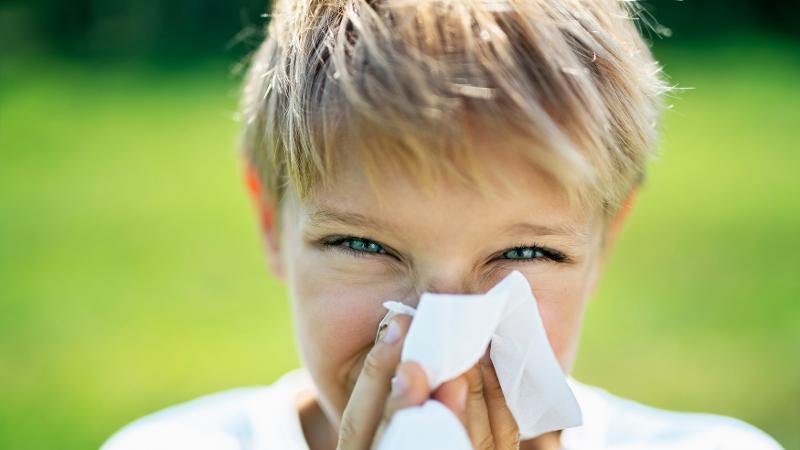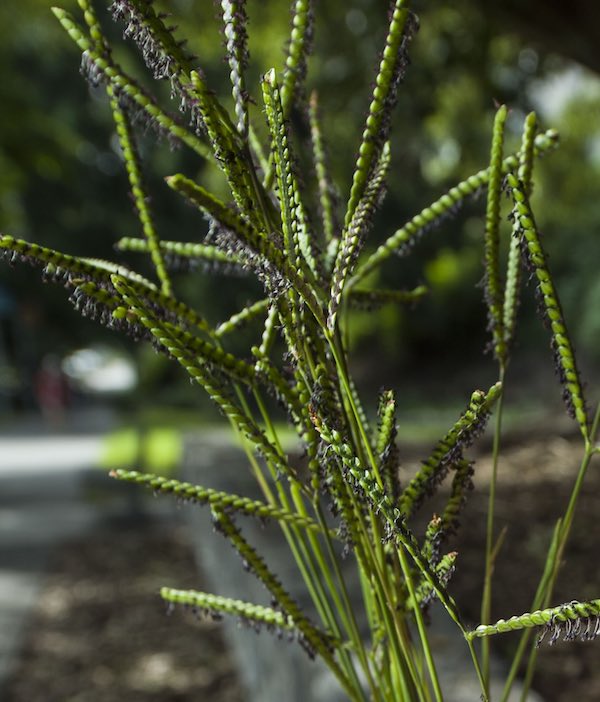
QUT’s Allergy Research Group has resumed monitoring and forecasting for Brisbane’s grass pollen season, with recent rainfall likely to bring an early spike in pollen levels and an intense season ahead predicted due to the La Nina weather pattern.
Head of the Faculty of Health Allergy Research Group Professor Janet Davies said pollens from flowering grasses increase health risks for allergy sufferers, and providing the forecast means those at risk can take preventative measures when airborne pollen levels are expected to be high or extreme.
“When people with pollen allergy are forewarned about danger periods they can plan ahead and look to stay indoors, keep windows closed, avoid outside areas like gardens and parks, or if they are venturing outside to make sure they have appropriate asthma or allergy relief medication with them,” she said. This year:
- Daily measurements of grass pollen concentrations and forecasts are being shared on a new AusPollen Brisbane website as well as via Facebook.
- A new dial display shows where the grass pollen forecast sits within each of the reporting ranges (low/medium/high/extreme) – whether the pollen is likely to be at the higher or lower end of the range.
- Forecasting has been refined to a four-day model (rather than a seven-day one) informed by research generated over the past four years of the national AusPollen Partnership, funded by the National Health and Medical Research Council and led by Professor Davies.
- Citizen scientist ‘grass gazers’ will be recruited through schools and the community to help researchers build a more comprehensive picture of when and where grasses flower in and around Brisbane.
Professor Davies said pollen samples, as in previous years, are being collected from the pollen trap at Rocklea and analysed in the laboratory to calculate the number of pollen grains per cubic metre of air. This information is used with weather and satellite data to provide the forecast for the current day and next three days.
The peak Brisbane season for flowering grass pollens is usually from November through to the end of March, but Professor Davies said following the pattern of recent years the season may well last longer - through to May.
“This year the Bureau of Meteorology has indicated we have a La Nina weather pattern,” she said.
“This means we are like to see an abundance of grass growth and flowering in Queensland over summer. We’ve already seen greening from recent rains and we’re expecting pollen levels to start moving towards the high range at the end of this month, or early December.
“It is especially important this year for people who suffer asthma or hay fever to be aware of conditions and triggers, as allergies can produce some of the symptoms similar to COVID-19, such as cough and shortness of breath, and sufferers are inclined to touch their faces frequently.
“Hay fever sufferers also often experience itchy eyes, which is not a symptom associated with COVID-19, but rubbing your itchy eyes poses a risk.”
To gather additional data on flowering grasses around Brisbane which produce allergy-triggering pollens, the Allergy Research Group has received a Queensland Citizen Science Grant to recruit an army of ‘grass gazers’ through schools and the community.
Professor Davies said the funding will enable a follow-up study to the citizen scientist pilot program run earlier this year with agricultural students at Corinda State High School. While students were schooling at home during the COVID-19 shutdown, they studied a learning module developed by the research team, then took photos of grasses in their local areas and uploaded them to a mapping portal.
“We’re going to take what we learnt from that project, refine the learning materials and program tools and test them again later this year,” Professor Davies said.
 “We’re planning to invite other schools to participate and also invite people in the community to become grass gazers.
“We’re planning to invite other schools to participate and also invite people in the community to become grass gazers.
“When people are out and about, like walking their dogs, we’d like them to photograph the types of grasses they see when those grasses are in flower, and to upload those images regularly over the grass pollen season.
“We will be working in partnership with the Queensland Herbarium to have images verified by experts.
“Gathering this information about when and where the various types of grasses are flowering will further improve our forecasting to help people in the community manage their allergies.
“We’ll be inviting people and schools to contribute to the project after Christmas, from January through to May. If community groups, schools or individuals would like to participate please contact us.”
To contact the research team email auspollen@qut.edu.au
QUT Media contacts: Karen Milliner, 07 3138 1841 or k.milliner@qut.edu.au
After hours: Rose Trapnell 0407 585 901 or media@qut.edu.au


